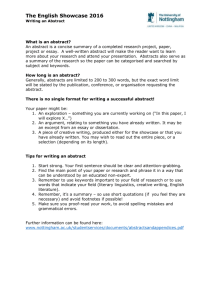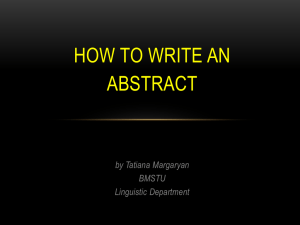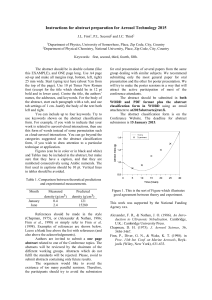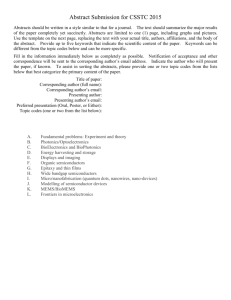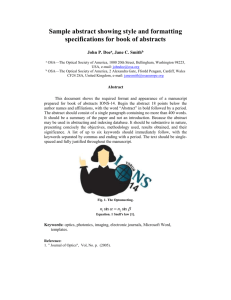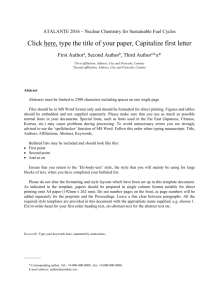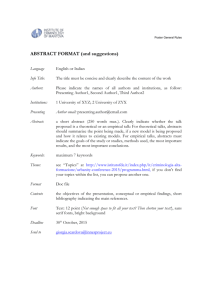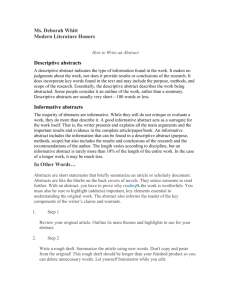Abstract Template
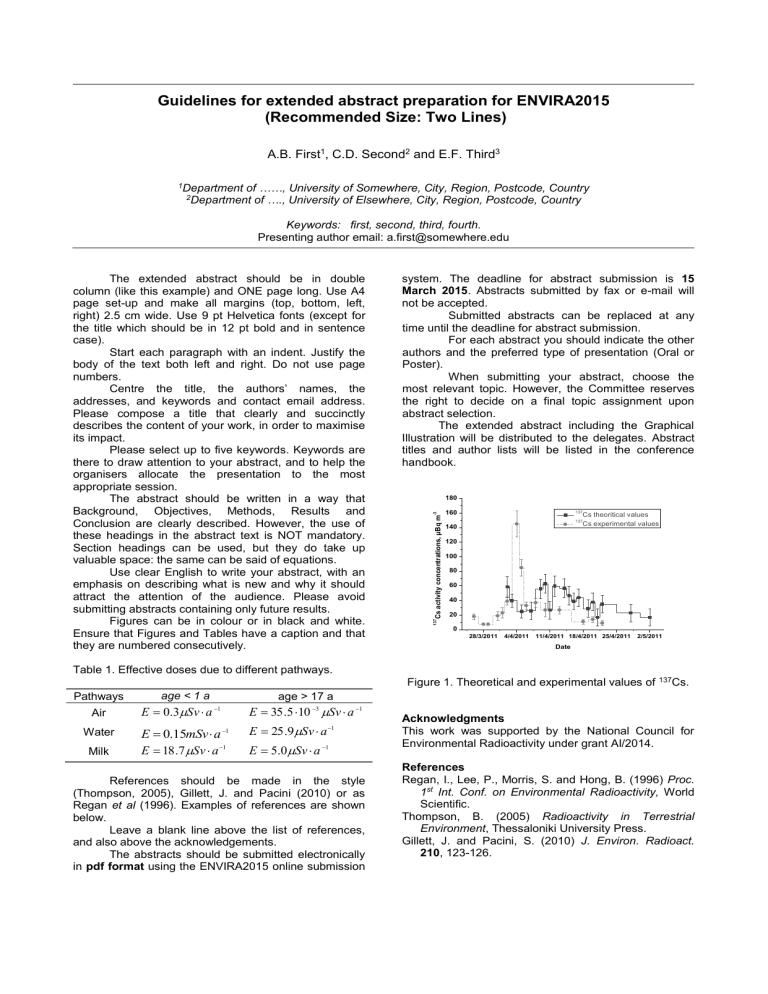
Guidelines for extended abstract preparation for ENVIRA2015
(Recommended Size: Two Lines)
A.B. First 1 , C.D. Second 2 and E.F. Third 3
1 Department of ……, University of Somewhere, City, Region, Postcode, Country
2 Department of …., University of Elsewhere, City, Region, Postcode, Country
Keywords: first, second, third, fourth.
Presenting author email: a.first@somewhere.edu
The extended abstract should be in double column (like this example) and ONE page long. Use A4 page set-up and make all margins (top, bottom, left, right) 2.5 cm wide. Use 9 pt Helvetica fonts (except for the title which should be in 12 pt bold and in sentence case).
Start each paragraph with an indent. Justify the body of the text both left and right. Do not use page numbers.
Centre the title, the authors’ names, the addresses, and keywords and contact email address.
Please compose a title that clearly and succinctly describes the content of your work, in order to maximise its impact.
Please select up to five keywords. Keywords are there to draw attention to your abstract, and to help the organisers allocate the presentation to the most appropriate session.
The abstract should be written in a way that
Background, Objectives, Methods, Results and
Conclusion are clearly described. However, the use of these headings in the abstract text is NOT mandatory.
Section headings can be used, but they do take up valuable space: the same can be said of equations.
Use clear English to write your abstract, with an emphasis on describing what is new and why it should attract the attention of the audience. Please avoid submitting abstracts containing only future results.
Figures can be in colour or in black and white.
Ensure that Figures and Tables have a caption and that they are numbered consecutively.
Table 1. Effective doses due to different pathways.
Pathways
Air
Water
Milk
E
age < 1 a
0 .
3
Sv
a
1
E
E
0 .
15 mSv
a
1
18 .
7
Sv
a
1
E
E
E
35 age > 17 a
.
5
10
3
Sv
a
1
25 .
9
Sv
a
1
5 .
0
Sv
a
1
References should be made in the style
(Thompson, 2005), Gillett, J. and Pacini (2010) or as
Regan et al (1996). Examples of references are shown below.
Leave a blank line above the list of references, and also above the acknowledgements.
The abstracts should be submitted electronically in pdf format using the ENVIRA2015 online submission system.
The deadline for abstract submission is 15
March 2015 . Abstracts submitted by fax or e-mail will not be accepted.
Submitted abstracts can be replaced at any time until the deadline for abstract submission.
For each abstract you should indicate the other authors and the preferred type of presentation (Oral or
Poster).
When submitting your abstract, choose the most relevant topic. However, the Committee reserves the right to decide on a final topic assignment upon abstract selection.
The extended abstract including the Graphical
Illustration will be distributed to the delegates. Abstract titles and author lists will be listed in the conference handbook.
180
160
140
120
100
80
60
40
20
137
Cs theoritical values
137
Cs experimental values
0
28/3/2011 4/4/2011 11/4/2011 18/4/2011 25/4/2011 2/5/2011
Date
Figure 1. Theoretical and experimental values of 137 Cs.
Acknowledgments
This work was supported by the National Council for
Environmental Radioactivity under grant AI/2014.
References
Regan, I., Lee, P., Morris, S. and Hong, B. (1996) Proc.
1 st Int. Conf. on Environmental Radioactivity, World
Scientific.
Thompson, B. (2005) Radioactivity in Terrestrial
Environment , Thessaloniki University Press.
Gillett, J. and Pacini, S. (2010) J. Environ. Radioact.
210 , 123-126.
